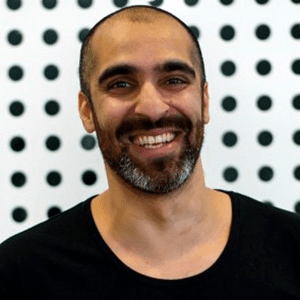

#27: Communication in a time of uncertainty – a leadership opportunity
People frequently turn to leaders for answers to tackle uncertainty. Staying calm and intentional is fundamental as ‘communication is not what’s said but what’s received.’
Ashton Bishop presents our listeners with the 5C’s of Crisis Response. Get clear on your Challenge. Be the Calm leader. Control the controllable. Clarity in your communications. Manage the Cycle. He suggested we stop thinking about time and think about the energy. Take time to slow down and check-in with each team-member.
Stephanie: Hello, and welcome to TEC Live. Stephanie Christopher here, chief executive of The Executive Connection. TEC connects CEOs, executives, and business owners to the world’s largest business leader network. Today, we have the wonderful Ashton Bishop as a return guest on TEC Live to talk about communication in a crisis. Ashton’s been working with our community as an expert for over 10 years, and, in fact, he said this morning that his 20-year career working with some of the largest communication agencies in the world has prepared him for this very moment. Ashton Bishop, welcome to TEC Live.
Ashton: Thank you, Steph.
Stephanie: It’s good to be prepared for this very moment. I’m glad someone is.
Ashton: Yeah, I feel like Rocky. I might have lost in the first one, but kept training, kept training.
Stephanie: And your time has come.
Ashton: Ready for this moment.
Stephanie: I know at some point you’re going to tell me to keep calm, so I will adopt an air of calmness right now. It’s amazing. It’s amazing as a leader how quickly it’s moving, and we’re focusing on communication today. It comes to mind, how often are you doing this? What kind of communication? Who’s important? So let me throw to you, what are you observing right now in people and in their communication?
Ashton: The inside out role of leadership is that when I’m speaking to clients on phone or over webinars at the moment, a lot of them are clearly having conversations with me or with their teams, but the conversations they’re having with themselves are terrible. So they’re stressing themselves out. So the rate of self-talk, somewhere between 300 to 500 words per minute. So the quality of the conversations they’re having internally are reflecting with the conversations they’re having with their teams, with their suppliers, with their clients, with their customers. So I think we need to … and I love your lead around staying calm because I think the first thing that leaders need to do, in a communication sense, is calm themselves because people are looking to leaders for leadership.
Stephanie: Do you know that’s really interesting? You and I were talking about this earlier in the week where I’m finding that a bit of a challenge is I’m moving so quickly, and so it’s adrenaline, which is addictive, and it’s hard to calm down. It’s hard to stop. That’s the biggest challenge right now because it’s so fast. My analogy is I’ve turned into Drew Barrymore in 50 First Dates; that whatever happened yesterday, so I spent a long time writing something to people last Friday, by Monday it was completely redundant. So how do you do that?
Ashton: I think we’re going to do some other work around that sort of Five Cs of crisis response, and I think that’s control the controllable. But one of the controllables is you as a leader. I think we need to stop thinking around time and think about energy. That’s the shorts in Loehr work on full engagement that says we need to be on and then recover, and be on, and then recover. The only way we can do that, or not the only way, but one of the things that’s really helpful is to get explicit about what your counterbalances are. I’ve found myself working at my desk from 7:00 in the morning till 10:00 at night some days. Because of the changes that are happening in the external environment, I need to respond. But I make sure it’s a standing desk, and I make sure that I’m taking time out to breathe and ground and get centered. I make sure that I’ve got the dog walk in the calendar. Those sorts of things rejuvenate and replenish me, become the non-negotiables.
Stephanie: I think that’s great. Bringing it back to that idea of self-talk, it’s really important isn’t it? I guess, part of it is if, as a good leader or as a responsive lady, you’re communicating well with your team, with your customers, with your suppliers, it’s intentionally communicating well with yourself.
Ashton: Yeah.
Stephanie: So it’s thinking about, ‘How am I talking to people right now?’ For me, it’s about optimism, celebration. I’ve really made sure I’m upping, ‘Well done on that.’ You did that thing as well. I’m making that daily. Something that might have waited for an end of month person of the month idea. But yeah, Ashton, just even from this morning, you’ve changed my view to make sure that I’m being intentional about having a strategy almost for how I talk to myself.
Ashton: Yeah, and that shows, Stephanie. So I think the keyword there is intention, to be intentional with all communications with ourselves and with others. A couple of observations from my point of view this morning was as I walked past your daily stand up, there was actually energy and buzz and optimism. I remember that you did your 10 out of 10 call outs to say, ‘Hey, I just want to acknowledge the team. We’re winning here and here,’ and then you went from there and you walked into the room with me and my team and you had a certain energy. There’s a saying in communication that says, ‘I can’t hear what you’re saying because who you’re being is too loud,’ and that often comes when people are negative or charged or down. But when you walked in with the energy that you are throwing off, there’s a vibrance and an optimism that, therefore, has people lean in rather than lean back.
Stephanie: For me, where that was coming from this morning was the kind of phew, that, ‘Phew, everyone’s had to switch to a remote way of working. The plan’s coming together,’ and really quickly, and that’s what’s working. So I guess the self-talk is ‘You’ve got this.’ Wow. You have to do something different and, wow, you’ve done it in a week, or we have. So talk to me then, so assume I’ve got my self-talk right, and after seeing you today, all over, what else is important then in the communication right now, broader?
Ashton: It’s actually, because you said you did it in a week, or the team turned around in a week, and actually haven’t, because the foundations of this and where I want to start is a conversation on trust, because I think that underpins all of our communications. There’s a Warren Buffett quote that says, ‘It’s only when the tide goes out do we really see who swim with no clothes on.’ I think the leaders who are then trying to step into command and control where they don’t have the trust of the team and people are very much focused on themselves and their mortgage and their job security. There is no listening and there is no communications and breakthrough.
So I think around trust, if we start there, there isn’t an organisation on the planet that doesn’t have trust somewhere near their corporate values. But I think we talked about this last time, respect, integrity, communications, excellence, whose corporate values are those?
Stephanie: Enron. Fantastic.
Ashton: Enron’s, yeah. Brilliant. Because it lived in the bottom drawer, it didn’t live in people’s hearts and minds. I think when we actually look at the two foundations of trust, one is what we call this foundations of trust and the relationship fuel, which builds resilience and this is the test of resilience in these times.
Then there’s the feedback loop of trust. So just starting on what builds trust, and there’s some excellent research on this called the partner responsiveness model. So it came from, if you look at what’s a company, it’s a group of people united by a common purpose, and when people get together or human progress comes down to collaboration. So between people, the foundations of trust that had been proven by science, are three factors of understanding. Do I take the time to listen first and understand you deeply? Do I validate it? It’s probably the one I’m guilty of stepping over too because I’m looking ahead and I’m looking for solutions, and I stopped to just play back and it’s not this parroting back, but it’s showing that I’ve listened and validated the other person. Then it’s caring, which is these moments where you take what you’ve learnt and you do something surprising. It’s not necessarily the quantum of the gesture. It’s the linking back to the validation that matters.
Stephanie: You just picked up on something that I’m really challenging myself on, because if you’re in a psychometric assessment, I come out at Sten10 optimistic, which is as optimistic as you can be. The problem is I noticed that this morning that I’ve really switched to the future, that it’s about, ‘Okay, this is good, secure these, great. Now, then what? Then what? Then what?’ I pulled myself up because I thought people aren’t going to be ready for that. So communication needs to be what’s right for the time, doesn’t it?
Ashton: Absolutely. What’s actually comes back to what communication is, and really, if we talk about that theme of intentionalism, communication is the shift of someone from point A where they think, feel or do something to point B where they think, feel and do something else. As the leader or as the leaders, you are often ahead where you’re looking over to the next horizon and when you’re speaking back, you can sometimes forget where they are. If you think about point A where they are, they might be very entrenched there where they’ve been doing the same thing for a very long time or they’re really stuck. So if someone’s gone through life and gone, ‘Ugh, I hate change, I’m no good at change,’ guess what? We’re changing right now. But they’re very stuck there. So they’re very entrenched at point A. So that’s the sort of … if you imagine a vertical dimension to say how stuck they are, and then the point B is the distance. How far are you really asking them to go? Because there’s listening for you from the place they’re at and great leaders can speak into that listening of where the person is.
Stephanie: So more than ever now, and we’ve talked about this in this podcast series so many times, about making sure that you’re checking in on where someone is at. We’ve talked about it through change. We’ve talked about it about decision making, leading. So more than ever now it’s that taking the time to check back, isn’t it?
Ashton: Yeah.
Stephanie: It’s kind of slow down. My husband always talks about The Matrix. When the bullets started flying, Keanu slowed down, and that’s what matters now. Slow down and make sure you know where they’re up to before you start trying to drag them onto the next stage of the journey. Is that right?
Ashton: Yeah, exactly right. I think once you’ve got those foundations of trust in place, and that’s the check-in, so understanding, validation, and caring, but the loop is very much explicit expectation to make sure that you know exactly what’s expected of people around you. Because this is potentially, at the moment, like right now, it’s a medical crisis, it’s financial crisis, and maybe it’s a leadership opportunity.
Stephanie: Nice.
Ashton: Leaders grow those around them. So the request of leaders to step up and lead around you in your teams is about explicit expectations. It’s not about 100% integrity; it’s that they’re going to look to you and if you’re saying one thing and doing something else, if you’re swimming like a duck and barking like a dog, they’re going to get confused. So it’s important that you’ve got integrity and you’re very clear that what comes out of your mouth happens. That’s probably the challenge for the optimist into the future is it’s the leader’s job to say things as they are no better or no worse.
Stephanie: Yes.
Ashton: Yeah?
Stephanie: Yeah.
Ashton: And we can talk about a better future, but we need to acknowledge where we are today. Then the third bit is that open feedback, and that’s your check-in point, to make sure that we’re checking in regularly and we’re checking in with intent. That’s great.
Stephanie: I really like your idea about expectations and, in fact, as the team is moving to working from home, which is a different paradigm for how we normally work, I realised that accountabilities are funny word. Expectations is a word that really makes sense, and being very clear. These are the expectations every single day and that might change. But I think that’s really important now. It’s a great opportunity because there’s no alternative to practice good leadership, isn’t it?
Ashton: Yeah. They say necessity is the mother of all invention. Maybe one thing is out of our control, the other thing is maybe we’ve been practicing this our whole lives.
Stephanie: What a nice positive slant on it. We’ve been practicing for it.
Ashton: Success is opportunity meets preparedness, and if you look at the practices and the habits and, certainly within the TEC community, it is all about habit and practice. I think really that’s the dimension where people … There’s a few places that people go wrong with communications is they underestimate where their audience is and they don’t speak to and attend to that, and then they miss-
Stephanie: Tell me more about that, Ash.
Ashton: So that was the diagnosis piece, to say, ‘We’re moving somebody from point A to point B,’ and really getting … it’s actually a long way.
Stephanie: Okay, so I get what you’re saying, where they are on that continuum, not physically who is my audience right now.
Ashton: Exactly. It’s just speaking to that. So we’re all moving from home right now, so it’s a little more-
Stephanie: Working from home, yup.
Ashton: Oh, sorry, yeah, working from home. Then the other conversation just says, ‘We’re moving to work from home from today. Now, we understand that for some of you you’ve never done that before. We also understand that it’s going to be a big change in the people who’ve worked in teams.’ It’s just acknowledging that gets a different listening rather than stepping over it. So that’s the attending to it. Then the two dimensions that really matter with communications, once you’ve got your intention right, once you framed it for value for them, is emotional impact, to make sure you really resonate with the right emotion around it. That’s often what you’re giving off as the leader. The leader who says, ‘I’m so excited about this opportunity,’ and you just … it’s not genuine.
Stephanie: It’s not authentic, yeah.
Ashton: And then the other thing is effective frequency. An effective frequency-
Stephanie: Huge.
Ashton: Links really well to that expectations piece. If you think it’s once and done, you’re wrong. The research around effective frequency says that when we grew up in a communication sense and very much a broadcast sense, it used to be Ostrov’s three-hit theory and what is it, what is all of it, and then a true reminder. So even when there was less distraction and less noise, we still had to have a message to land probably three times. Remember how humans learn. They learn by rote repetition. The way our brains are wired is by rote repetition. We rewire or remodel or replasticise our brains through repetition. Yet we forget with communications that, to be effective, and certainly in a modern world, in a complex world, it’s 8 to 13 times that we need to be prepared to tell somebody something. It’s how you set up for that, the expectations around that, that matter.
Stephanie: Yeah, that’s really good. So a couple of things come to mind. One, certainly about frequency and that’s … we’ve talked about it. My preparedness or learning was about the same time you started your career 20 years ago. It was 19 years ago, actually last week when HIH went under, so spectacularly. I was working for the one division of HIH that didn’t go into liquidation. So keeping that business going, I can’t … March, April, May, June, July … It was five months before we were sold. I remember talking to each of the state managers or branch managers, I think it was, saying, ‘I will call you this afternoon even if I don’t have anything to tell you.’ I learnt then the power of frequency that it surprised me that people would want to hear even if you had nothing to say. I think frequency is really, really important.
What I also learnt then was people can do some odd things and react in some pretty funky ways because that’s what personal stress brings out. So that was the other big learning for me. But something I’ve learned this time is communication doesn’t have to be how we would have normally done it because, boy, we’re lucky that this is happening with technology the way it is. So I found with my team, and I know more my team within with each other, that actually a face to … a Zoom call is even better than face-to-face in some ways because it’s intentional, and hearing this morning one saying to the other, ‘I realised I hadn’t seen someone today,’ so I just called that and the two of them had a Zoom call. Well, whatever call it is, but a technology-enabled call and they saw that as a face-to-face interaction. So don’t assume that things are all changing for the worst, I think.
Ashton: That’s your optimism coming through.
Stephanie: That’s my optimism coming through. Toning it down. I acknowledge this isn’t an ideal time.
Ashton: That’s an amazing experience from HIH. But why you say it was an effective frequency thing, it was actually an act of trust and an act of caring. Do you get that? To actually say, ‘Even though I might not have an update for you, I just want to check in and see how you are,’ right? So that’s understanding, validation, and caring in an act. The fact you did it with frequency, that’s the flywheel of trust and that builds the resilience and that says when something goes wrong, or somebody flips out, or we get some extra bad news that we didn’t intend for, there’s that resilience or capability built within the relationship or be it within the team structure around it.
Stephanie: Yeah, that’s good. Thank you for that. For me, also, it’s something about consistency of your message. It’s tricky because there’s stuff you don’t know, but just watching what we’re all hearing every day, hearing on Sunday morning, ‘No, it’s fine to shake hands.’ Sunday night, ‘Whatever you do, don’t shake hands.’ So I’m just being mindful of, how can I keep a thread of consistency? What’s the underlying important message that I can remain consistent about and the other bit that can vary around it? I guess that’s where authenticity as a leader comes in. That’s so important, isn’t it?
Ashton: Yeah.
Stephanie: Yeah.
Ashton: So when we’re looking at that effective frequency, that does come from consistency. So it’s basically that core message to repeat it and reframe it and reaffirm it. I think it’s maybe a separate thing in terms of where we source our information from and the credibility around that. So you never want your credibility tied up with a falling someone else’s dropping credibility. I think there really needs to be, once again, intention and consideration in what we say, what we don’t say, and how that ends up in communication. Because communication is not what’s said, it’s what’s received, and we receive such little information of the total information that’s out there. Like there is so many articles and opinions and news, and that calm and center myself, distill from all the noise what’s really important, and then package that up as value for the people that I care about, that’s what leads to calmness, action, and results.
Stephanie: Beautiful. So communication is not what’s said, it’s what’s received. Just that simple loop you’ve talked about this morning, starting with trust and how important that is, making sure that you’re understanding whether where your audience is at on the continuum of change, checking in frequently, being authentic as a leader, it makes so much sense. You’ve said one of my favourite words, which is intentional. Be intentional about what you’re doing right now. We started with self-talk and I think, I keep thinking this week, all these weeks, about put your own oxygen mask on first. What I’m finding as a leader, it’s conversations like this that just helped me go straight to my oxygen mask. Ashton Bishop, thank you very much.
Ashton: Thanks, Steph.
Stephanie: So that’s TEC Live for today. CEOs are in the business of making decisions and leadership is the art of execution. I’m Stephanie Christopher, and look forward to talking to you next time.



